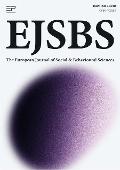
The European Journal of Social & Behavioural Sciences
Online ISSN: 2301-2218
European Publisher
Comparative Analysis of Surveys Focused on Pupils Attitudes Toward the Teaching of Programming in Schools
Table 1: Summary of surveys on attitudes towards programming
| Survey and its author(s) | Number of items | Item types | Content structure | Survey testing | Sample size | Commentary |
| Impact on Attitudes and Self-Efficacy with CS by Phillips & Brooks (2017) | 4 | four-point Likert scale | pre-test and post-test with one HoC lesson; items divided into two factors – "attitude" and "selfefficacy" | paired t-test | 8040 elementary and middle school students | focused on Hour of Code, conducted in Dec. 2016 |
| Attitudes toward Learning Programming through Visual Interactive Environments by Asad, Tibi, & Raiyn (2016) | 29 | five-point Likert scale | items in three categories – "motivation," "competition" and "challenge"; survey accompanied by a written exam, assignments and final projects | descriptive statistics, Cronbach's Alpha from 0.69 to 0.99 | 24 elementary school pupils | based on Baser (2013); used three different learning environments |
| Attitudes towards computer programming and knowledge of programming by Du, Wimmer & Rada (2016) | 4 (on attitudes) | four and five-point Likert scale | participant information followed by only four attitude items; also tested programming comprehension; used pretest and post-test | descriptive statistics with two-tailed paired ttest | 116 university students | focused on Hour of Code; similar to this paper author's master's thesis |
| Attitudes Evaluation Tools by Klement Klement & Lavrinčík (2012) | 12 (students) and 16 (teachers) | dichotomic questions (yes-no) | different survey for students and teachers; items divided into 7 factor areas | descriptive statistics only | 321 grammar school students and 12 teachers | for testing course in Visual Basic 2012; only in Czech lang. |
| Attitude Scale of Computer Programming Learning (ASCOPL) by Korkmaz & Altun (2014) | 20 | five-point Likert scale | two-pool indication between positive-ness and negative-ness; factor "Willingness" with 9 positive items, factor "Negativity" with 6 items and remaining items are "Necessity" | exploratory and conf. factor analyses, item factor correlations, corrected correlations, etc. | 496 university students in the first phase and 262 in the second | fully validity and reliability tested survey |
| Computing Attitudes Survey by Tew, Dorn & Schneider (2012) | 10 (on attitudes, overall length 53) | five-point Likert scale | measures novice-to-expert attitude shifts with items divided into eight factors (only the last factor "Personal Interest & Enjoyment" is attitude oriented) | exploratory and confirmatory factor analyses, KMO = 0.866 and Bartlett's test χ2(595) = 3359 | 447 university students | fully validity and reliability tested; based on Colorado Learning Attitudesabout Science Survey (CLASS) |
| Programming Attitude Scale by Baser (2013) | 35 | five-point Likert scale | items divided into four factors (see chap. 6) | Exploratory factor analysis, reliability from 0.87 to 0.93 | 179 university students | based on Wiebe (2003) |
| Computer Science Attitude Survey by Wiebe, Williams, Yang & Miller (2003) | 57 | five-point Likert scale | questions divided into five subscales | Cronbach's alpha from 0.83 to 0.91 | 162 university students | based on Fennema-Sherman mathematics attitude scale |
